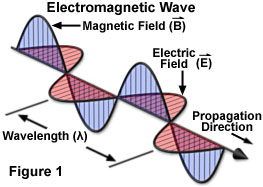Electromagnetic Waves Antenna Systems Reflection References

Maximum power transfer
is an important condition in many mechanical, electrical, and
electronic
systems.
Although maximum power transfer is not always expected in a particular
system, in the case of electromagnetic wave
propagation, maxmimum power transfer is necessary because it prevents
damage to transmission
components and provides maximum energy to the transmitted wave.
Principles of maximum power transfer:
The source is the transmitter and the load is the combination of antenna system and the atmosphere.
The transmitter energy is relayed via an antenna. The antenna is essentially a transfer point for energy exchange between the transmitter and the atmosphere (or space).
Principles of maximum power transfer:
- System components and important properties:
- Load: System within which energy supplied by a source is converted from one form to another to perform some function.
- Source: System from which energy is
produced, collected,
or relayed. The source provides energy to a load.
- Impedance: Opposition to flow of electric current.
- When the impedance in a load is equal to the
impedance of an
energy source, maximum power will be transferred from the source
to the load. In effect, the rate at which work is done within the
source is the same as the rate at which work is done within the
load. This means that the source-load system is balanced, that
is, no energy produced in the source is lost or reflected back to the
source.
The source is the transmitter and the load is the combination of antenna system and the atmosphere.
The transmitter energy is relayed via an antenna. The antenna is essentially a transfer point for energy exchange between the transmitter and the atmosphere (or space).